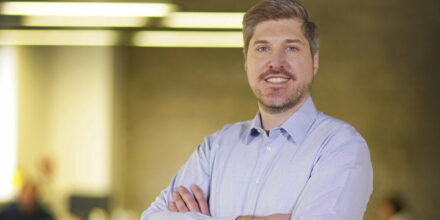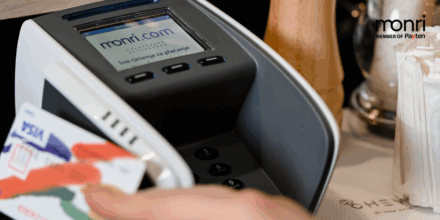Moreover, Money Motion bases its success on interesting speakers, good PR, and the fact that it’s not exclusive when it comes to competition among participants, i.e., exhibitors
How is the digital euro project progressing, are cashier-less stores the future, and what role do supercomputers play in banking? These and many other questions regarding the development of technology in the financial world will be answered at the Money Motion conference. This year’s edition is being held on March 21st and 22nd at the Zagreb Fair, with organizers expecting more than 2.500 participants. How they managed to sell out the conference last year and attract more than 1.000 participants to the first edition, how their organizational team functions, and what the secret to the success of this event is, shares Robert Penezić, one of Money Motion co-founders and Board Member at Monri Payments.
- You have been developing your career in banking, or rather, the financial industry, from the very beginning. When and how did you turn to technology in this sector?
After gaining business experience by developing projects in the payment industry within the banking sector, I decided to join Monri Payments, which at that time was a fintech startup, and today, it has grown into a regional leader in payment services. Changes within the payment sector are dynamic and conditioned by the rapid development of technology. I saw a great opportunity for innovation in this field that allowed the company to grow and reach the levels it is at today.
- How and on whose initiative was the Money Motion conference created? Who stands behind this very successful event?
Five people, not all of whom knew each other except by reputation since we come from the same industry, sat down for a drink one afternoon to discuss an event that would bring people from the industry together. All of us admired the excellent Money2020 conference held every year in Amsterdam, so we asked ourselves whether we could organize something similar, of course on a smaller scale, in Zagreb. And here we are, a year and a half later, 15 days before the second edition of the Money Motion conference, where we expect more than 2,000 visitors. Those five are Nikola Škorić, Luka Sučić, Igor Gržalja, Damir Čaušević, and myself.

Substantial In-house Organizing Committee
- How many people were involved in the organization of the first conference? Did you use the services of an event agency or your own team in collaboration with suppliers?
About 30 people participated in organizing the first conference, and this year, the number is around 70. We use our own team for the organization, which actually came together last year, and we just expanded it this year. These are people with experience in producing other events who have shown exceptional professionalism and dedication, which greatly contributed to making the first MoMo conference so successful and with so much positive feedback from visitors.
- What does the organizational structure behind the MoMo conference look like today? Do you have marketing and PR departments, sales, organizational (programmatic), and technical teams?
Today, it’s a very serious operation, with production, PR team, sales, programming service, coordinators for tickets, contracts with sponsors, hospitality, etc. As none of us organizers had experience with organizing such a big event, we realized that it was very challenging and required a lot of effort. With the help of all the people involved, we managed to successfully accomplish a huge job.
We have raised our own bar of expectations and took on that challenge.
- The first edition of the conference was sold out a week before it took place, and you gathered almost 1,300 participants. How did you manage to do this, and what would you say was key to success – marketing, content, speakers…?
The first year, a lot of things fell into place. We had very interesting speakers/panels, the PR team did an excellent job, and everyone in the industry was missing an event like this one. Because of all this, the response was greater than expected. It was only after the conference ended and after all the positive comments that we realized we were in trouble. How do we make the next conference even better, more interesting, and with even more participants after all this? We’ve raised our own bar of expectations and took on that challenge. Whether we will succeed, we will see in about 15 days.
Without Sponsors, There Would Be No Conference
- What has been the response from exhibitors and sponsors, i.e., how did you finance the start?
Without sponsors, there wouldn’t even be a conference. From the very first day, based solely on the idea, we were supported by Mastercard, OTP bank, and Nexi, and we are grateful to them. From the beginning, our idea was to organize a conference that wasn’t sales-oriented or exclusive in terms of competition.
So, everyone who participates in any way in the financial industry, fintech, or payment sector, regardless of the market they are present in, is welcome. We believe that this is the only way participants can get information about trends, innovations, and the general direction in which the industry is headed.
- After a successful edition at Lauba, you are moving to the Zagreb Fair this year. These are two quite different spaces: Lauba as an urban art space and the Zagreb Fair as an exhibition hall. Is the reason only the number of participants, i.e., the capacity of the space, or are there other criteria that influenced this choice – what is most important to you when choosing a location?
In Zagreb, the choice of venues that can accommodate more than 2,000 participants is very limited, so the Fair is a logical choice. Lauba is a perfect space, especially because of that artistic touch that gives a special feel. However, for our ambition, it has insufficient capacity.
Logistically, the Fair is a much more demanding space for us, requiring a greater investment in terms of preparation, but we are confident that all participants will be satisfied with the transformation of an exhibition space into a place for networking and lectures.

The Biggest Challenges – Budget and an Attractive Program
- What would you say are the biggest challenges in organizing a fintech conference in Zagreb, and how did you overcome them?
I would highlight two main challenges: budgeting and closing the financial gap and how to compile a good, interesting program with speakers who attract audiences and can offer intriguing and appealing content.
As I’ve already mentioned, the conference wouldn’t be possible without our sponsors, to whom I’m grateful, and also not without the visitors who purchase tickets, whom I encourage to do so as soon as possible, if they haven’t already. The program and speakers are prepared by the program service, for which we utilized our connections and relationships with relevant industry figures who recognize our energy and dedication and gladly respond to our invitation.
- This year, you expect twice as many participants. How do you attract participants, and what can they expect from participating in the conference?
We will attract participants with the topics we cover, interesting speakers, an attractive exhibition space, and opportunities for networking to gain new ideas, opportunities, and, ultimately, new business partners in terms of expanding their business. I believe this conference will be even better than the last one, and I can conclude that as a member of the fintech, payment, or financial industry, I wouldn’t miss being a part of this event.
Original article: Poslovni turizam, Ana Remenar
Featured image: Slavko Midžor/PIXSELL



